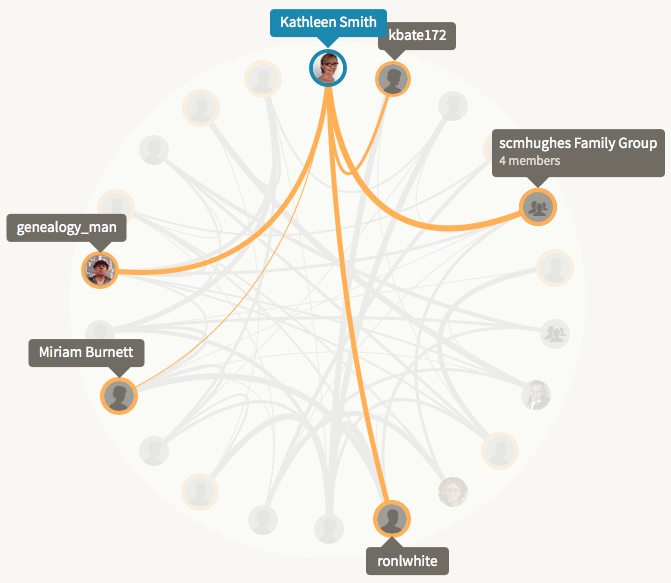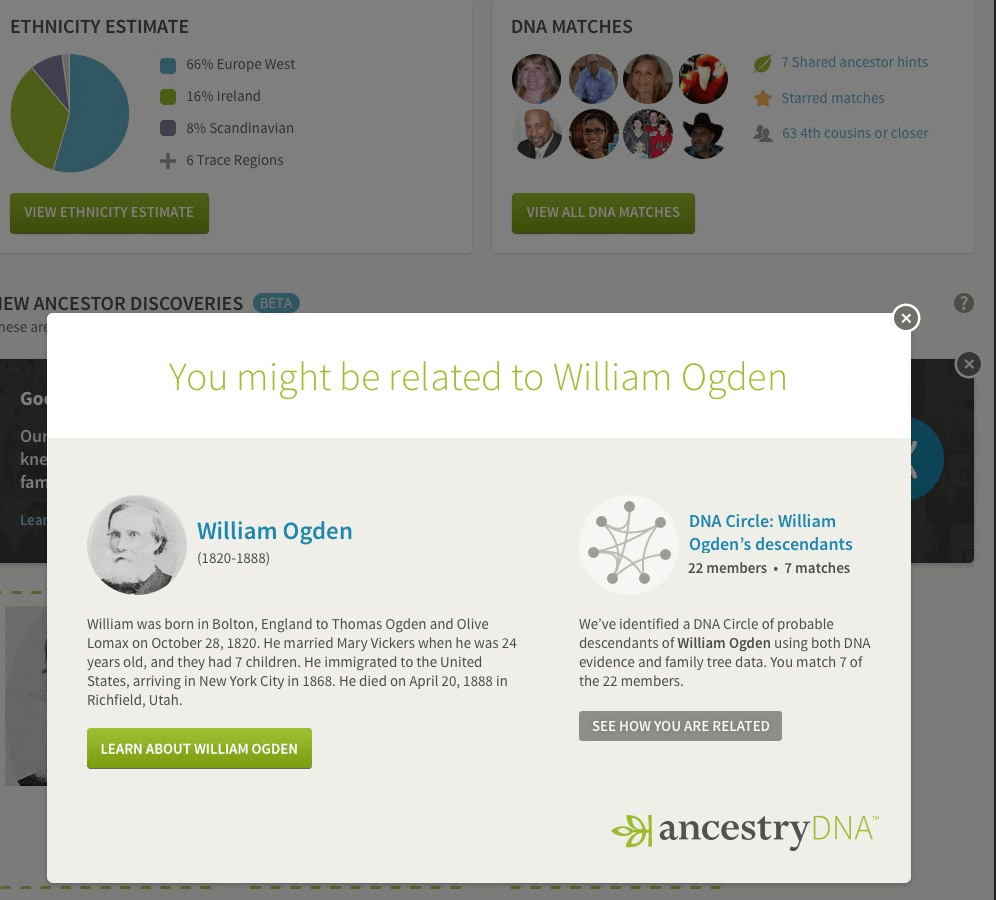At AncestryDNA, we empower our customers to uncover exciting details about their family stories. Today, we announced a new AncestryDNA experience based on years of research and development by the AncestryDNA science team that is revolutionizing the way people discover, preserve, and share their family history. Learn more about the announcement here.
We are combining DNA testing with the power of 65 million family trees to make it faster and easier than ever to discover ancestors you never knew you had. New Ancestor Discoveries, our new patent-pending capability available with every AncestryDNA test, are a new way to discover your story – finding possible ancestors or relatives for you, even if you know nothing about your family history.

The building blocks: DNA matching and member trees
New Ancestor Discoveries build on two features that are already part of AncestryDNA. The first building block of New Ancestor Discoveries is DNA matching: the identification of pairs of people who seem to share identical pieces of DNA with one another, and so are likely to be related.
The second building block? While a person’s New Ancestor Discoveries are not based upon any information in your own tree, they are based upon the trees of your DNA matches, or genetic relatives.
New Ancestor Discoveries extend from an existing AncestryDNA feature known as DNA Circles™, which integrate these two building blocks.
A DNA Circle is a group of people who all claim to be descended from a particular ancestor (say, William Ogden) in their family trees. But in addition, they all share DNA with other members in the group. These two pieces of evidence, and some statistics behind the scenes, support that the members of the DNA Circle really are descendants of William Ogden.

New Ancestor Discoveries: the power of DNA matching
But what about a descendant of William Ogden who doesn’t know it, and consequently isn’t in the William Ogden DNA Circle? That is where New Ancestor Discoveries can help – by drawing his or her missing link to the DNA Circle and to William Ogden.
The key idea is that if your DNA matching shows that you are related to a significant number of an ancestor’s descendants in a DNA Circle, you too are likely a descendant – and so should receive a New Ancestor Discovery to this ancestor.

For every AncestryDNA member, we examine their DNA matching results to every DNA Circle in the database. If it looks like they belong to a DNA Circle, they’ll get a New Ancestor Discovery.
That means that the AncestryDNA member who didn’t know she was a descendant of William Ogden might receive a New Ancestor Discovery, and jump-start her family tree.
The nitty gritty
The reality is that if you share DNA with members of a DNA Circle, it does not necessarily mean that you also share the DNA Circle ancestor. You could instead have another ancestor in common with the Circle members – for example, if the Circle ancestor is the sister of your great-grandmother. You could also share several different common ancestors with multiple members of the Circle – even if none of them are actually the ancestor of the Circle.
To provide New Ancestor Discoveries that more often suggest direct-line ancestors, we combined several pieces of information into our algorithm: the number of people in the DNA Circle with whom you share DNA, the amount of DNA shared with each DNA Circle member, the number of generations back to the ancestor for each individual in the Circle, and our confidence that you and each member of the Circle share only one common ancestor.
Then, to assess the algorithm’s performance, the science team did what we love and conducted a lot of experiments. For thousands of individuals from a variety of ethnic backgrounds with deep and full family trees, we took them out of their DNA Circles and calculated their New Ancestor Discoveries.
We found that New Ancestor Discoveries correctly identified ancestors in those individuals’ trees, or was related to the ancestor in another way, about 70% of the time. Keeping in mind that as with all statistics, there’s a tradeoff between how many discoveries we can provide to customers and how often they’re correct, this is an impressive feat: we are providing almost 1 million New Ancestor Discoveries to AncestryDNA customers. Even when New Ancestor Discoveries do not point to a direct-line ancestor, they provide a useful starting point for genealogical research.
While someone’s experience with New Ancestor Discoveries may differ depending on their family’s history and how much they already know about their family tree, our testing has convinced us that New Ancestor Discoveries are the way forward: providing a glimpse of your ancestors, or a head start in finding them, as has never before been possible.
As AncestryDNA members update their trees and as the AncestryDNA database grows, we will continue to identify new DNA matches and discover additional and larger DNA Circles. So the most exciting part about New Ancestor Discoveries is that their impact can only increase over time – bringing the power of DNA matching integrated with family trees to even more AncestryDNA members with diverse and complex family histories.

